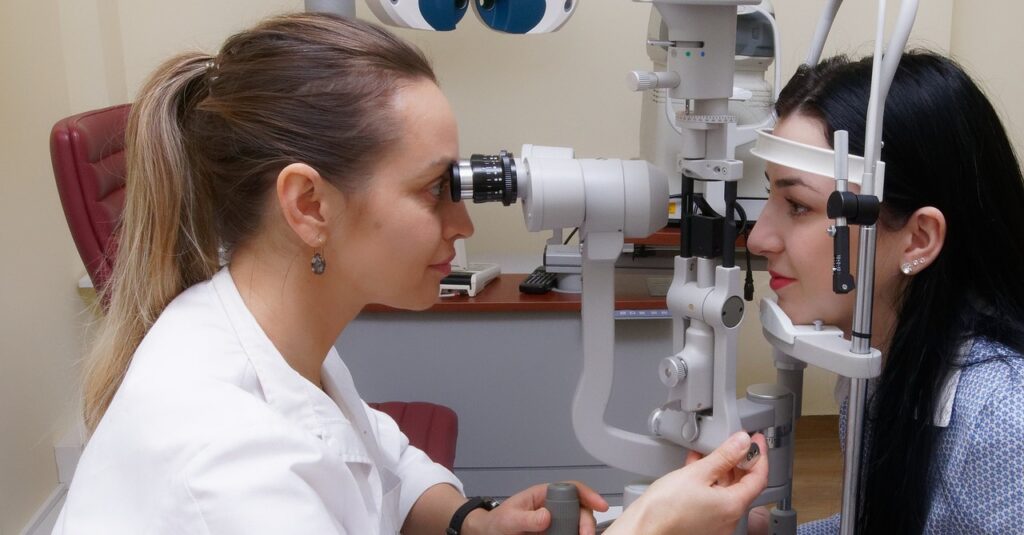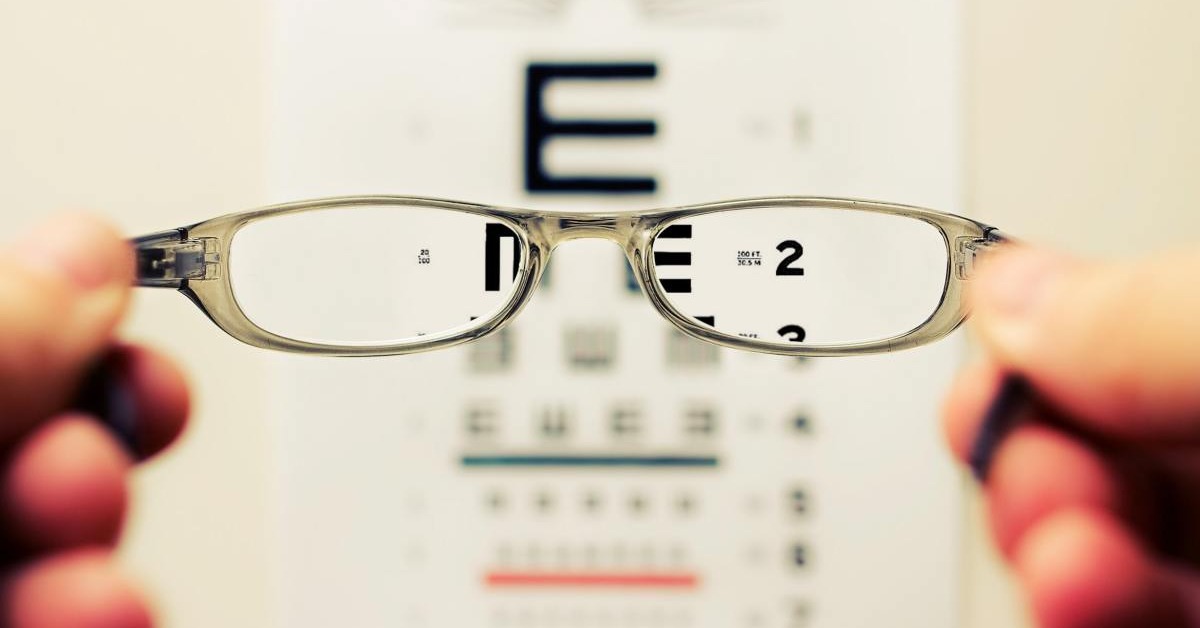
Why Become a Sports Vision Optometrist?
Sports vision optometrists work with patients at all levels, including [...]

If you’ve ever wondered about the impact optometrists can have, look no further than the story of Sarah Sidik. Months after completing Doctor of Optometry requirements, Sidik traveled from her home in England to Kurdistan and provided free vision care to children. Over the course of two days, Sidik conducted eye exams on 80 children, including both basic tests and refraction tests to better match them with the correct prescription. More than 85 percent of the children she saw had some type of vision issue.
Your experience as an optometrist may not be as dramatic or as newsworthy, but it can be every bit as impactful. Every day you’ll improve patients’ lives by improving their vision and helping to diagnose other significant health conditions. This article explores what optometrists do and also addresses:
With titles such as optometrist, ophthalmologist, and optician regularly used in close proximity to one another, it can be confusing to know exactly where an optometrist’s responsibilities start and end. Here’s what you need to know. Ophthalmologists attend medical school and possess the skills needed to perform surgeries. Opticians focus exclusively on using prescriptions from optometrists or ophthalmologists to create and fit corrective lenses. They can also help patients decide on the type of frame and material used based on specific conditions and facial structure.
So where does that leave optometrists? These eye care professionals are often the first port of call for assessing overall eye health, conducting checkups and examinations, and prescribing treatments. Optometrists handle many conditions in office, whether providing eye drops or suggesting contact lenses. They work closely with ophthalmologists and opticians to ensure patients receive the full spectrum of care.
Optometrists perform many duties, though specifics of their day-to-day responsibilities can vary based on whether they specialize in particular types of vision problems, eye disorders, abnormalities, or populations. Some common tasks carried out by optometrists include:
Becoming a doctor of optometry requires individuals to complete several steps before receiving licensure. First, work towards a bachelor’s degree; students who know they want to pursue this path typically choose a major such as physical science or biology, as this helps them complete prerequisites required for entrance to a Doctor of Optometry (OD) program. Some learners decide to complete their undergraduate studies before applying to postgraduate studies, while others take advantage of programs offering early admission.
At Indiana University’s School of Optometry, for instance, students who complete at least 90 hours of approved courses along with an additional 18 hours in arts and humanities, foreign language, and social and historical studies can bypass the final year of their bachelor’s degree and move straight into OD studies. This pathway benefits learners by allowing them to graduate one year early and pay for one less year of education.
After earning an OD, some graduates participate in a year-long residency to develop a specialization. Others move directly on to meeting licensure requirements.
Doctor of Optometry programs require four years of full-time classroom and clinical learning. While the first two years of most programs focus on building knowledge through classroom and laboratory experiences, the third year combines coursework with more hours devoted to patient care experiences.
The final year of OD programs focuses on clinical care rotations. At the New England College of Optometry (NECO), students complete 1,200 total hours of patient rotations in specialty, primary, and advanced care as well as an elective area.
Admission requirements look different from school to school, with some setting more competitive requirements around GPAs and prerequisites. Some may also require applicants to participate in an interview as part of the process.
All 23 OD programs currently operating in the US use the Optometry Centralized Application Service (OptomCAS). Students who used CommonApp for their undergraduate applications will find many similarities with OptomCAS, which allows learners to submit a centralized application to multiple schools. The application cycle typically opens during the summer and closes late spring the following year.
Materials applicants must gather includes transcripts from any institution(s) previously attended, letters of recommendation, a personal essay, and, if required, Optometry Admission Test (OAT) or Graduate Record Examination (GRE) scores. Some schools may require supplementary materials outside the OptomCAS system and learners must pay individual application fees.
Because no pre-optometry undergraduate programs currently exist, the first two years of an OD program focus on building foundational skills related to the discipline. In the first year, students cover topics such as anatomy and physiology, clinical reasoning, cell biology, and public health. After building the foundation, learners move into coursework focused specifically on optometric principles. Some of the topics commonly covered include principles and practice of optometry, neuroanatomy, ocular disease principles, color vision, ocular biochemistry and genetics, contact lenses, and binocular vision and ocular motility.
Some coursework focuses exclusively on classroom instruction, while others include labs or patient care experiences to build real-world skills and competencies.
After completing four years of rigorous full-time education, graduates need to finish one more step before starting their practice. In addition to graduating from an accredited program, licensure boards also require candidates to pass the multi-part examination administered by the National Board of Examiners in Optometry (NBEO). Some states may require additional clinical or legal examinations as well.
After receiving licensure, optometrists must complete a minimum number of continuing education credits to renew their license.
Optometrists earn salaries well above the national average for all occupations because of their advanced education and comprehensive eye expertise. As of May 2021, these healthcare professionals received median yearly incomes of $124,300, according to the Bureau of Labor Statistics. Many factors influence how much an optometrist earns, including experience level, title, employer, and location. For instance, optometrists who start their own practices typically earn more than those who work for a health clinic or hospital. Last year, the top 10 percent of optometrists commanded incomes in excess of $192,390.
Location can also heavily factor into earning potential. The Bureau of Labor Statistics reports that Connecticut currently pays the highest annual mean wage at $155,070. Maryland ($144,570), Alaska ($143,260), North Carolina ($141,140), and Louisiana ($138,520) rounded out the top five for 2021.
Earning a Doctor of Optometry online is not currently possible given that all 23 available programs require in-person clinical components. However, the New England College of Optometry (NECO) the oldest continuously operating optometry program in the nation, is innovating by providing the first hybrid learning option. While most schools partner with clinical locations within a drivable distance, NECO plans to work with sites throughout the country and make it easier for students in many different states to earn their Doctor of Optometry. Lecture-style courses will be delivered remotely online, enabling students to earn their OD without relocating, regardless of where they live.
NECO is currently seeking accreditation for its hybrid model but hopes to welcome the first group of optometry students in August 2023.
.
Questions or feedback? Email editor@noodle.com

Sports vision optometrists work with patients at all levels, including [...]

Future health professionals considering the field of eyecare may well [...]

American students can choose from among 24 accredited Doctor of [...]

Cornea and contact lens optometrists are highly educated practitioners; they [...]

Roughly one in four optometry students pursue a residency after [...]
Categorized as: Optometry, Nursing & Healthcare